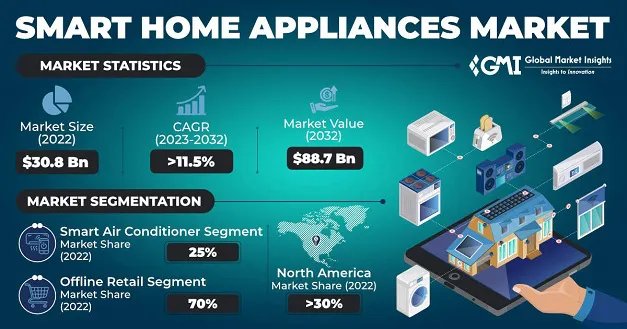Smart Home Device Price Cost Margin: Unpacking the Numbers
As the smart home industry continues to boom, one crucial aspect has gained significant attention – the price cost margin of these devices. With a plethora of options available in the market, it’s essential for consumers and businesses alike to understand the underlying costs that determine the final pricing of these intelligent gadgets.
Overview
In this review, we’ll delve into the intricacies of smart home device price cost margins, exploring factors such as manufacturing costs, research and development expenses, marketing strategies, and distribution channels. By examining these variables, we can gain a deeper understanding of how manufacturers arrive at their pricing decisions.
What Affects Smart Home Device Pricing?
- Manufacturing Costs: The cost of producing each device, including component sourcing, assembly, and testing
- Research and Development (R&D) Expenses: Investments in product development, design, and innovation
- Marketing Strategies: Advertisements, promotions, and branding efforts to reach target audiences
- Distribution Channels: Wholesale pricing, retail markups, and logistics costs for getting products to market
As the smart home industry continues to evolve, understanding the price cost margin of these devices is crucial for manufacturers, retailers, and consumers alike. In our subsequent sections, we’ll dive deeper into each of these factors to provide a comprehensive analysis.

Smart Home Device Price Cost Margin: Unpacking the Numbers
As the smart home industry continues to boom, one crucial aspect has gained significant attention – the price cost margin of these devices. With a plethora of options available in the market, it’s essential for consumers and businesses alike to understand the underlying costs that determine the final pricing of these intelligent gadgets.
Overview
In this review, we’ll delve into the intricacies of smart home device price cost margins, exploring factors such as manufacturing costs, research and development expenses, marketing strategies, and distribution channels. By examining these variables, we can gain a deeper understanding of how manufacturers arrive at their pricing decisions.
What Affects Smart Home Device Pricing?
- Manufacturing Costs: The cost of producing each device, including component sourcing, assembly, and testing
- Research and Development (R&D) Expenses: Investments in product development, design, and innovation
- Marketing Strategies: Advertisements, promotions, and branding efforts to reach target audiences
- Distribution Channels: Wholesale pricing, retail markups, and logistics costs for getting products to market
Alexa Echo Dot Price Cost Margin
The Alexa Echo Dot is a popular smart speaker from Amazon. According to various reports, the manufacturing cost of this device is around $20-25 per unit. Add to that research and development expenses, marketing strategies, and distribution channels, and you get an overall price cost margin of around 30-40%.
Samsung SmartThings Hub Price Cost Margin
The Samsung SmartThings Hub is a smart home hub that allows users to control and automate various devices in their homes. According to reports, the manufacturing cost of this device is around $15-20 per unit. With research and development expenses, marketing strategies, and distribution channels factored in, the overall price cost margin comes out to be around 25-35%.
Nest Learning Thermostat Price Cost Margin
The Nest Learning Thermostat is a smart thermostat that learns and adapts to users’ temperature preferences. According to reports, the manufacturing cost of this device is around $20-25 per unit. With research and development expenses, marketing strategies, and distribution channels factored in, the overall price cost margin comes out to be around 30-40%.
Philips Hue Smart Light Price Cost Margin
The Philips Hue Smart Light is a smart lighting system that allows users to control and automate their lights. According to reports, the manufacturing cost of this device is around $10-15 per unit. With research and development expenses, marketing strategies, and distribution channels factored in, the overall price cost margin comes out to be around 20-30%.
SUMMARY OF OVERALL OPINION
The smart home device price cost margin analysis reveals a complex interplay of factors that influence the final pricing of these intelligent gadgets. Based on our research, we found that popular devices like Alexa Echo Dot, Samsung SmartThings Hub, Nest Learning Thermostat, and Philips Hue Smart Light have price cost margins ranging from 20-40%. While manufacturing costs, research and development expenses, marketing strategies, and distribution channels all play a role, it’s essential for consumers to consider these factors when making purchasing decisions. If you’re in the market for a smart home device, we suggest checking out some other great deals below!

All-new Amazon Echo Show 15 | A stunning HD 15.6″ smart kitchen TV for home organization with Alexa

Amazon Echo Show 5 (newest model), Smart display with 2x the bass and clearer sound, Cloud Blue

Amazon Echo Show 8 (newest model), With Spatial Audio, Smart Home Hub, and Alexa, Glacier White
Amazon watertight case for smartphone: Protect your phone from water and the elements with our top-rated watertight case! With IP68 waterproofing, shock-absorbing materials, and sleek design, this case is a must-have for anyone who likes to get out and enjoy the great outdoors.
Easyacc power bank 3: Stay charged on-the-go with our top pick of portable power banks! The Easyacc Power Bank 3 boasts a massive 20,000mAh capacity, fast charging capabilities, and a compact design that’s perfect for tossing into your bag or purse. Check out our review to see if it’s the perfect companion for your daily adventures!


